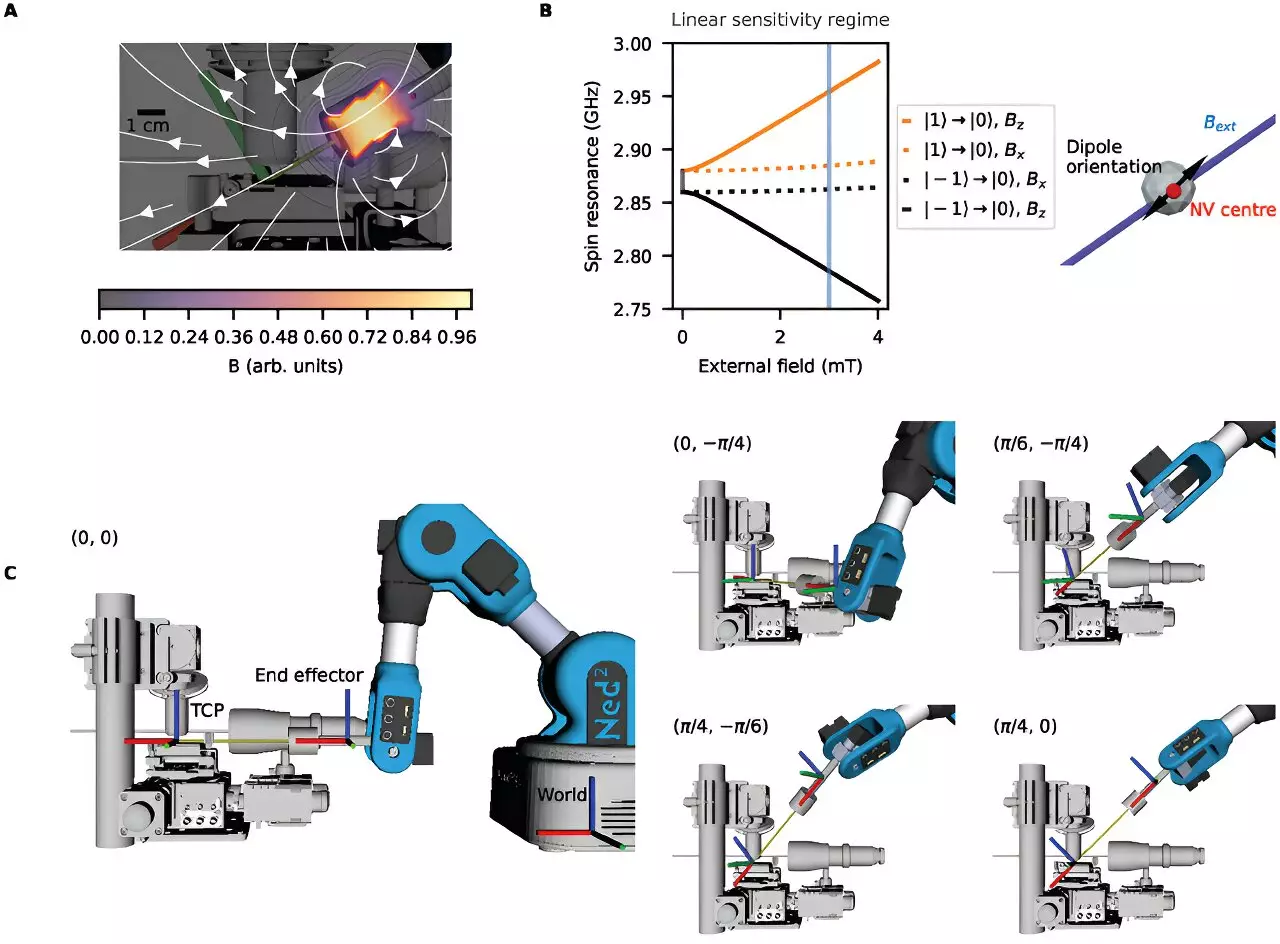Scientists engaged in quantum research now have access to a groundbreaking tool that promises to accelerate and enhance their work. Developed by researchers at the Quantum Engineering Technology Labs and the Bristol Robotics Laboratory (BRL) at the University of Bristol, this innovative robotic arm is poised to unlock major breakthroughs in the field. With a unique design, it enables scientists to conduct quantum experiments with unprecedented levels of speed, detail, and complexity. This development holds immense potential for applications in various domains, including healthcare and space communication.
Quantum technology has the power to revolutionize numerous industries, ranging from healthcare to communication. However, conducting experiments in this field often demands highly controlled environments involving ultra-low temperatures, atomic-scale interactions, and precisely aligned laser beams. The integration of robotic features into quantum experiments offers scientists a new level of versatility, allowing them to investigate complex setups with enhanced prototyping speed, control, and reliability. The research findings, along with the introduction of this robotic arm, were recently published in Advanced Science.
Lead author Dr. Joe Smith, Senior Research Associate at the University of Bristol, acknowledges that traditional lab components alone would not have sufficed for their experiment. Inspired by the increasing use of robotics in surgical procedures, Dr. Smith and his team recognized the potential of incorporating robotic arms into quantum research. The ability of surgical robots to navigate intricate areas of the body with precision served as a driving force behind their exploration of robotics in this context. Co-author Dr. Krishna Coimbatore Balram, Associate Professor in Photonic Quantum Engineering, emphasizes the significance of adopting advancements from other fields to propel quantum technologies forward.
The new robotic arm possesses a high-strength magnet that allows it to be positioned in three-dimensional space at any angle, effortlessly maneuvering around obstacles. Equipped with various tools, such as electrodes, lasers, and mirror surfaces, the robotic arm enables scientists to achieve precise alignment and manipulation in a wide range of experimental setups. Given its unprecedented accuracy and flexibility, this technology has the potential to transform quantum sensing experiments and expand their reach beyond the confines of quantum optics labs to practical applications like cell diagnostics.
By incorporating robotics into quantum research, scientists now have a powerful tool at their disposal that streamlines experimentation and paves the way for groundbreaking discoveries. The newfound ability to conduct quantum experiments with increased prototyping speed, control, and robustness opens up avenues for innovative research and development. This robotic arm facilitates faster data collection, intricate manipulations, and improved precision, all of which contribute to accelerated progress in the field of quantum technology.
The integration of the robotic arm developed by the researchers at the University of Bristol into quantum research represents a significant milestone. This revolutionary technology has the potential to reshape quantum experiments, allowing for faster, more precise, and more adaptable investigations. By harnessing the power of robotics, scientists can push the boundaries of quantum technology and explore its applications in diverse fields. With this new tool in their arsenal, researchers are poised to make groundbreaking discoveries that were previously unattainable, propelling the quantum revolution forward.


Leave a Reply